When you are first delving into Lean principles, you swiftly encounter two key concepts: Kaizen and Kaikaku. These interconnected ideas of improvement are essential to grasping the principles of Lean. They are not opposites or dueling schools of thought but rather two sides of the same process: your Lean transformation.
As organizations first start embracing Lean, they will often see some drastic early results. After identifying and removing large amounts of Waste, or Muda, from their organization, they will find a boom in productivity and drastic reductions in cost. This initial dramatic phase of the Lean Transformation is called Kaikaku.
Kaikaku
Kaikaku is a Japanese word for radical change. As part of a Lean transformation, this represents the initial fundamental shift towards reducing waste and increasing productivity. When touring a manufacturing facility in Hartford, Connecticut, a Lean consultant handed the CEO of the factory a metal saw and told him to cut all the storage racks in half, so that there would be smaller stockpiles of work-in-process. The CEO was hesitant but knew that this was the Kaikaku, the big dramatic change that begins the work of removing waste. He chopped the storage racks in half and showed his commitment to getting his facility Lean.
Kaikaku is also found in “Lean Workshops” where teams of employees assess a specific area of work – a production cell, a department of the office or a product line – and identify all the ways to remove waste within that area. These events, if properly implemented, can lead to huge leaps in productivity and are key stepping stones as you continue to improve processes.
By its nature, Kaikaku is not meant to be sustainable. If you are frequently overhauling your entire system of production, the lost time in training and employee burnout will reintroduce waste into your facility. That is why it goes hand in hand with Kaizen.
Kaizen
Kaizen is a broader concept. It comes from the Japanese word for constant improvement and is the process of making small changes to the work environment that create more value and reduce waste. The central tenet here is continuous improvement; when people talk about finishing their Lean journey, they are missing the point. Lean is a journey without an endpoint, a constant steady path towards more efficient production. By embracing the concept of Kaizen, you see that you do not need to wait for an event to eliminate waste but rather you can make small changes each day that quickly add up to dramatic savings.
A facility that has embraced Kaizen empowers employees to identify waste in the workplace and propose workable solutions. This usually takes three steps: identify a potential waste, document the problem and potential solution and then implement the solution. Inside a Kaizen-conscious workspace you will find scores of employee submitted ideas up on the walls as they are discussed and implemented. By harnessing the creativity of their ground floor workers, a company can make slow and steady improvement towards efficiency. Whether it is a simple marker on a bucket, so it no longer needs to be weighed each trip, or taping off the location for a tool to remove time spent searching, these changes can save hundreds of thousands of dollars each year.
Kaizen and Kaikaku are both essential components of a Lean transformation. Think about how they can be incorporated into your work environment. What is the best way to empower your employees to suggest solutions to workplace challenges? Good attentiveness to Kaizen philosophy will allow a company to maintain the changes implemented by the initial Kaikaku, and prepare employees for the next Kaikaku.
Learn more about Kaizen and Kaikaku in our video series Kaizen Workshop by clicking here.


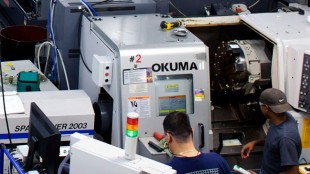

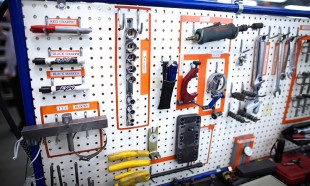


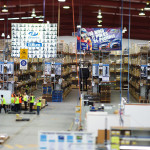
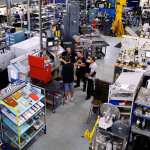
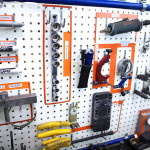


0 Responses on Kaizen and Kaikaku: Partners in Success"